- Joined
- Nov 26, 2005
- Messages
- 5,240
- Reaction score
- 11,006
Hi,
Finished the John Hills fowler. It was fun but unfortunately the owner, who is blind, was not able to help build it. High gas prices and building a home prevented him from traveling over the Green Mountains to my shop. The objective of the gun was to use as many parts as I could salvaged from an India-made "Ketland Officers's Fusil", which was a piece of junk but some of the parts served as good raw material for a new gun. The second objective was to make a gun that could be the plausible product of John Hills anytime between 1776, when he moved to Vermont from CT, and his death in 1808. Hills is the first documented gunsmith working in Vermont. I did not copy any gun but anyone familiar with John Hills' work should recognize the features. The first challenge was salvaging the lock from the "officer's fusil" and turning it into one that looks like a lock found on NE fowlers. I showed what I did in previous posts. Then I salvaged as many of the other components as I could. The barrel is 20 gauge and cut down to 40" from 44". The stock is red maple from Allen Martin. During salvaging I essentially remade all the other components. including the butt plate. The engraving borrows much from Hills' style and I wanted it to look rustic and a bit amateurish. This is not meant to look like a high end British fowler. It supposed to be the product of a rural Vermont gun shop. I engraved the owner's name on the side plate al la the famous "Rufus Green" gun. I put my name on the lock and butt plate with my shop location on the butt plate as well. I also engraved "Vermont" on the barrel as Hills often did. Note that you read the engraving on the butt plate one way and then have to turn the gun around to read the engraving on the barrel. That is simply the way Hills did it. The muzzle decoration was commonly used by Hills and is something of a signature. However, he did not always do it. Enjoy. Next up is a John Hills rifle. Two surviving rifles by Hills are described in Shumway's "Longrifles of Note Vol 2".
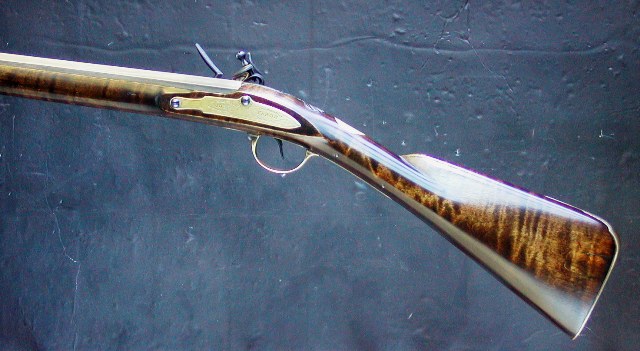
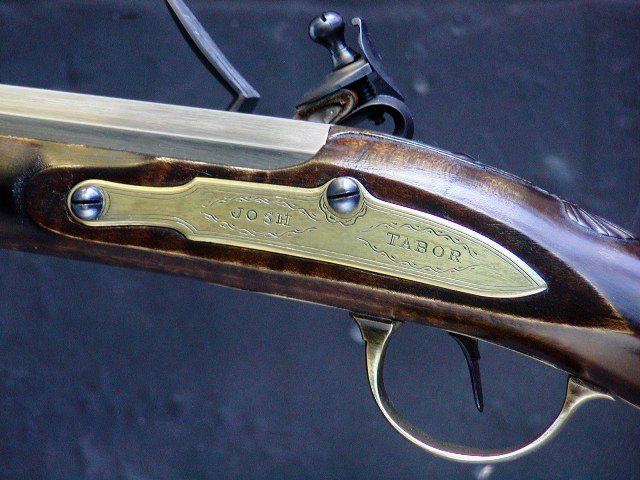
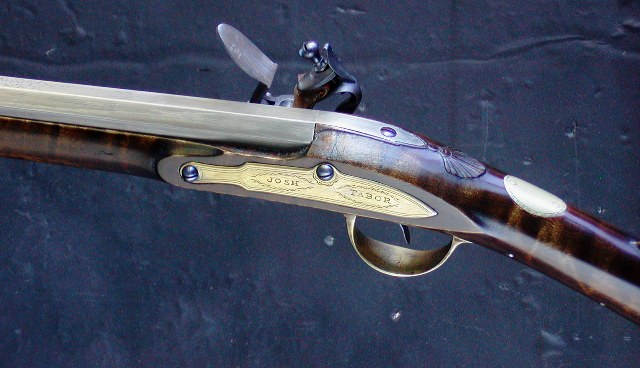
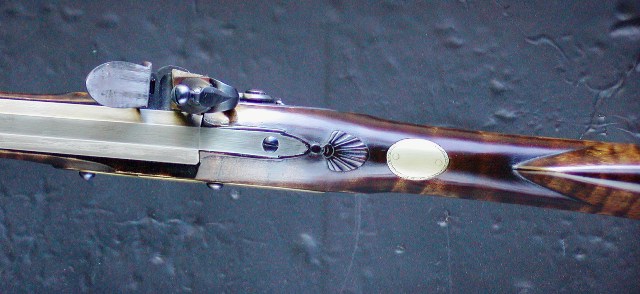

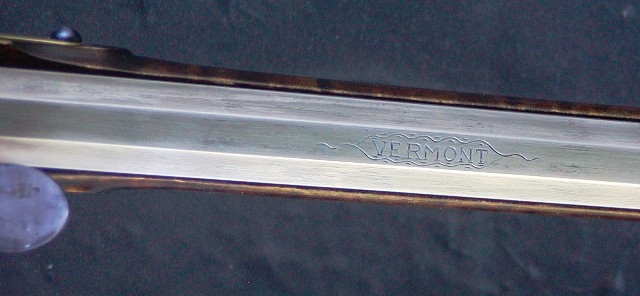

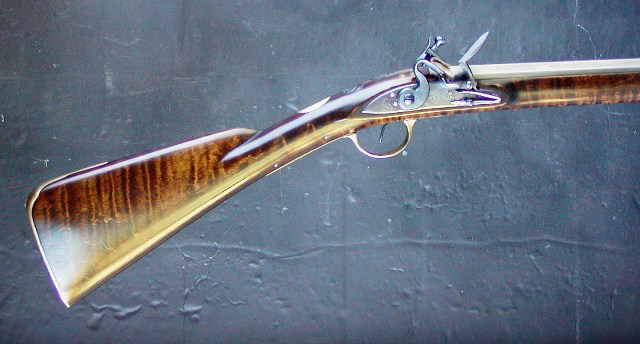
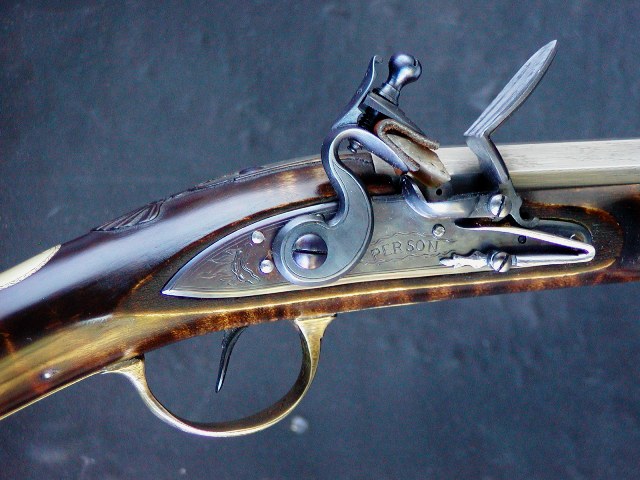
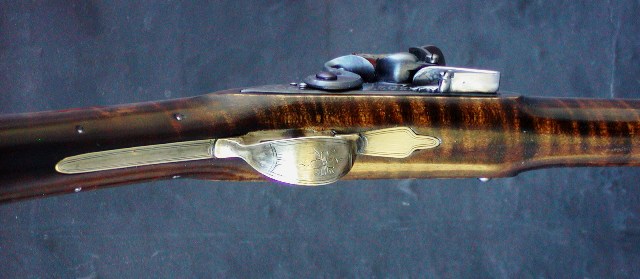
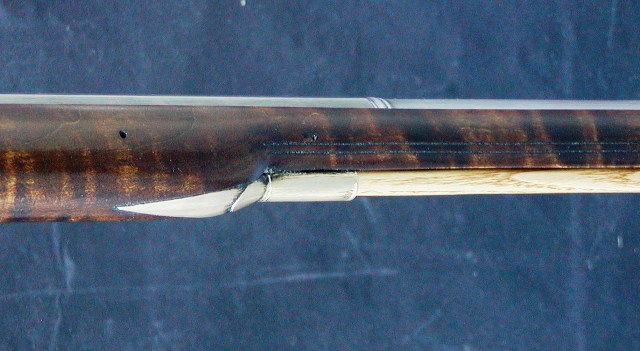
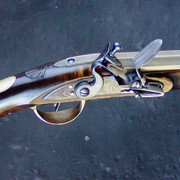


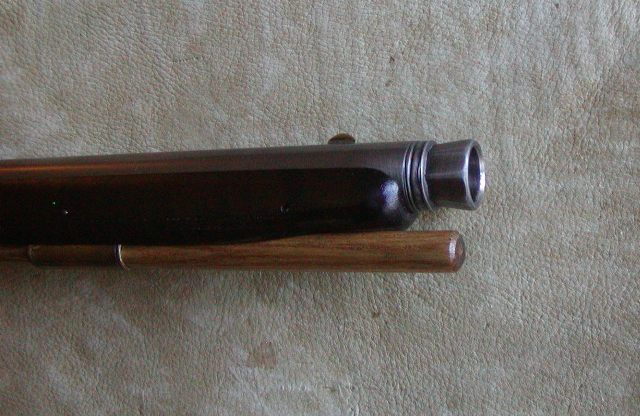
dave
Finished the John Hills fowler. It was fun but unfortunately the owner, who is blind, was not able to help build it. High gas prices and building a home prevented him from traveling over the Green Mountains to my shop. The objective of the gun was to use as many parts as I could salvaged from an India-made "Ketland Officers's Fusil", which was a piece of junk but some of the parts served as good raw material for a new gun. The second objective was to make a gun that could be the plausible product of John Hills anytime between 1776, when he moved to Vermont from CT, and his death in 1808. Hills is the first documented gunsmith working in Vermont. I did not copy any gun but anyone familiar with John Hills' work should recognize the features. The first challenge was salvaging the lock from the "officer's fusil" and turning it into one that looks like a lock found on NE fowlers. I showed what I did in previous posts. Then I salvaged as many of the other components as I could. The barrel is 20 gauge and cut down to 40" from 44". The stock is red maple from Allen Martin. During salvaging I essentially remade all the other components. including the butt plate. The engraving borrows much from Hills' style and I wanted it to look rustic and a bit amateurish. This is not meant to look like a high end British fowler. It supposed to be the product of a rural Vermont gun shop. I engraved the owner's name on the side plate al la the famous "Rufus Green" gun. I put my name on the lock and butt plate with my shop location on the butt plate as well. I also engraved "Vermont" on the barrel as Hills often did. Note that you read the engraving on the butt plate one way and then have to turn the gun around to read the engraving on the barrel. That is simply the way Hills did it. The muzzle decoration was commonly used by Hills and is something of a signature. However, he did not always do it. Enjoy. Next up is a John Hills rifle. Two surviving rifles by Hills are described in Shumway's "Longrifles of Note Vol 2".















dave




